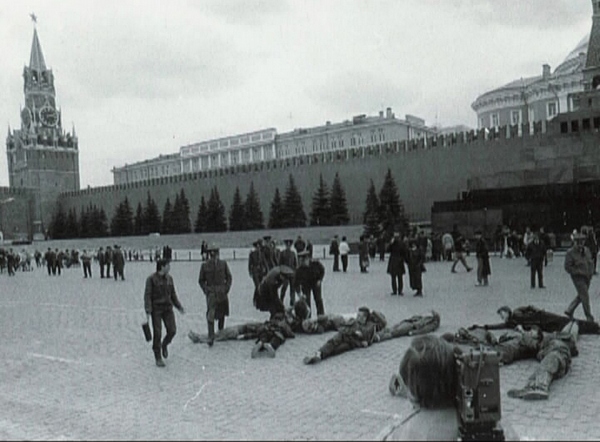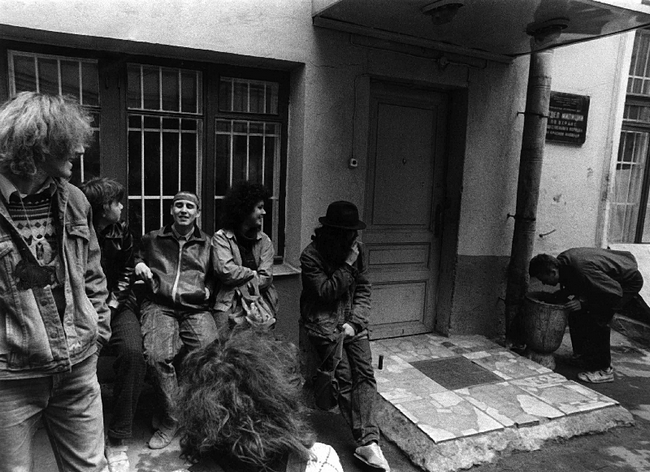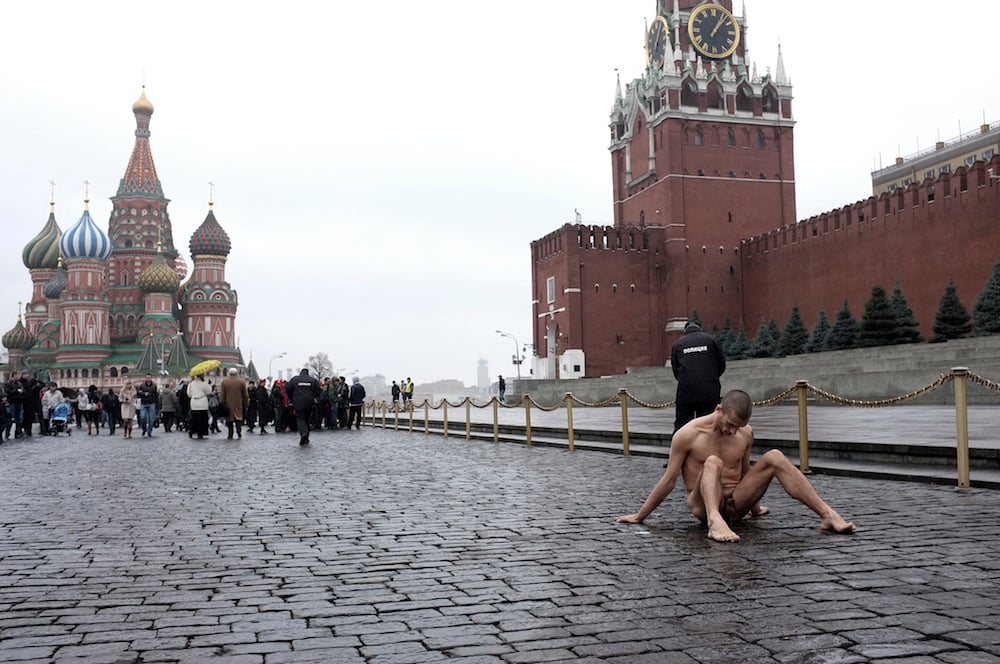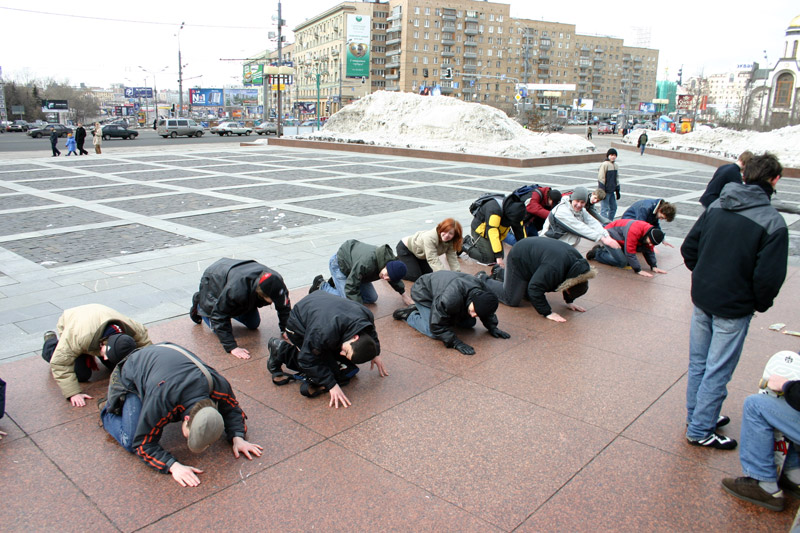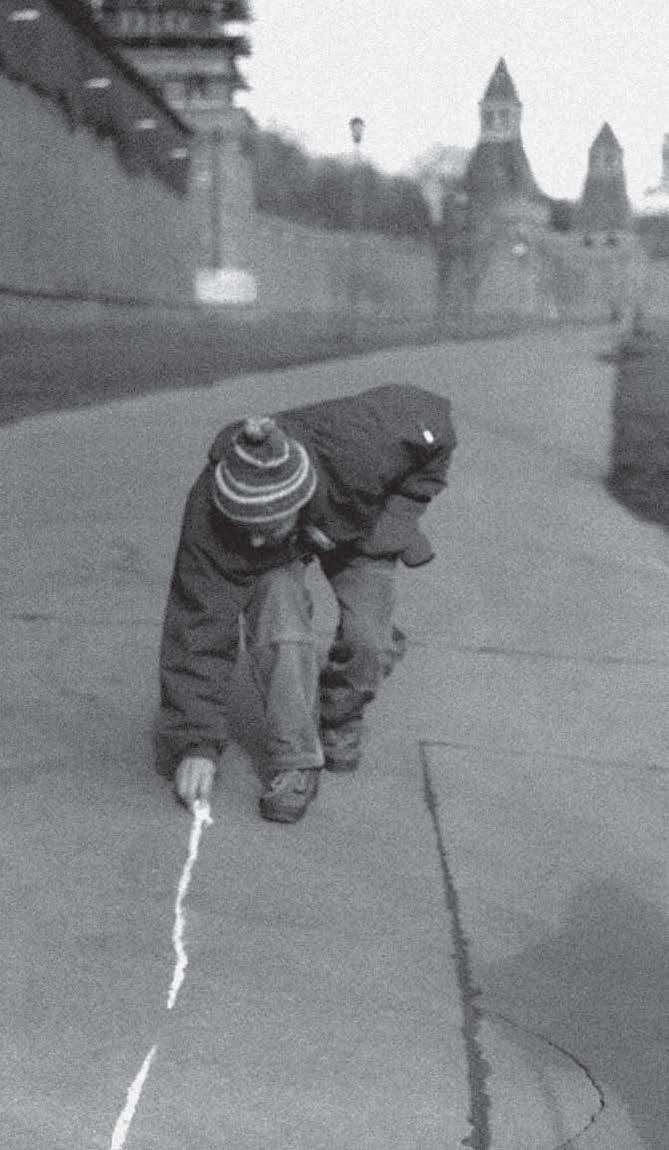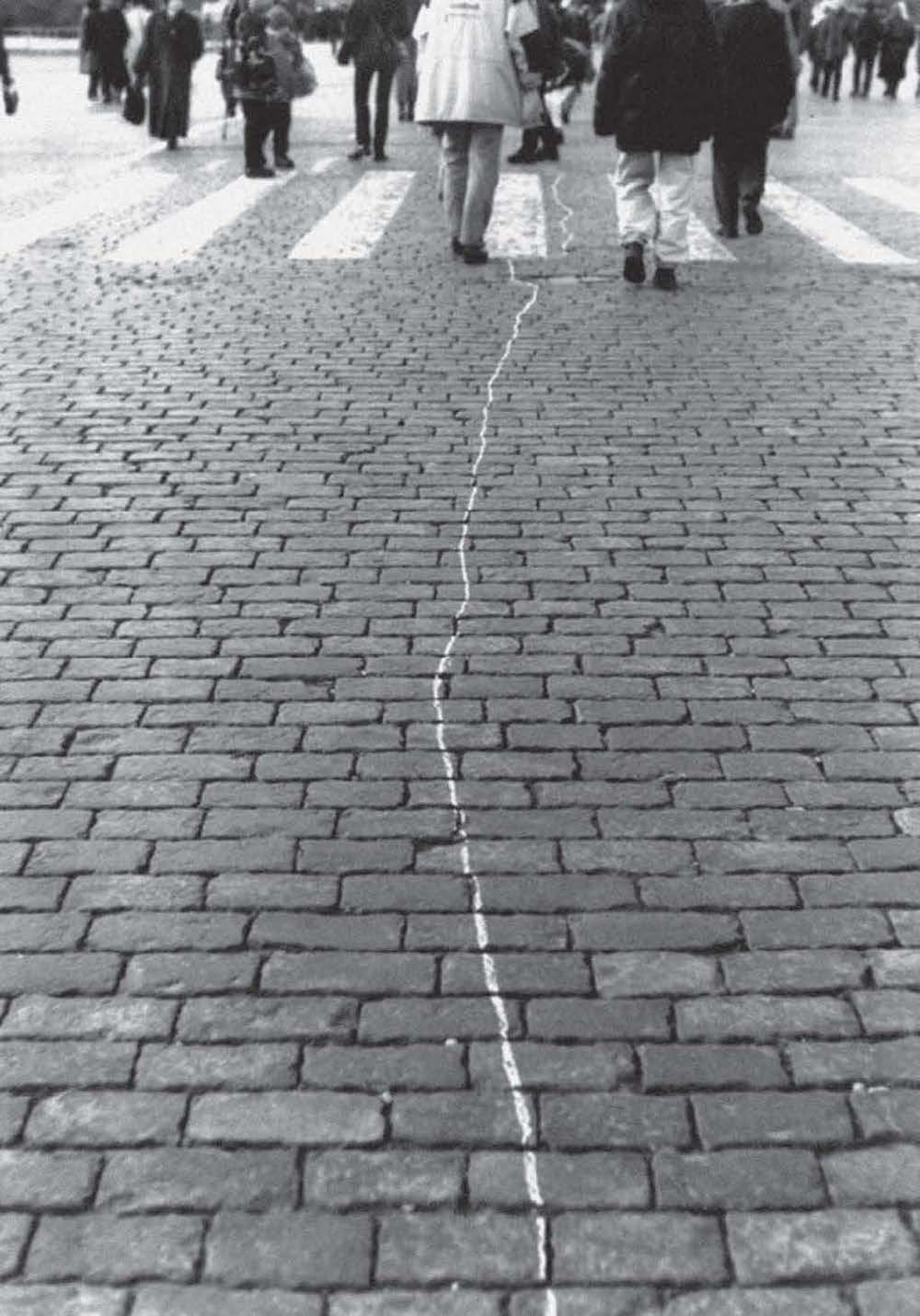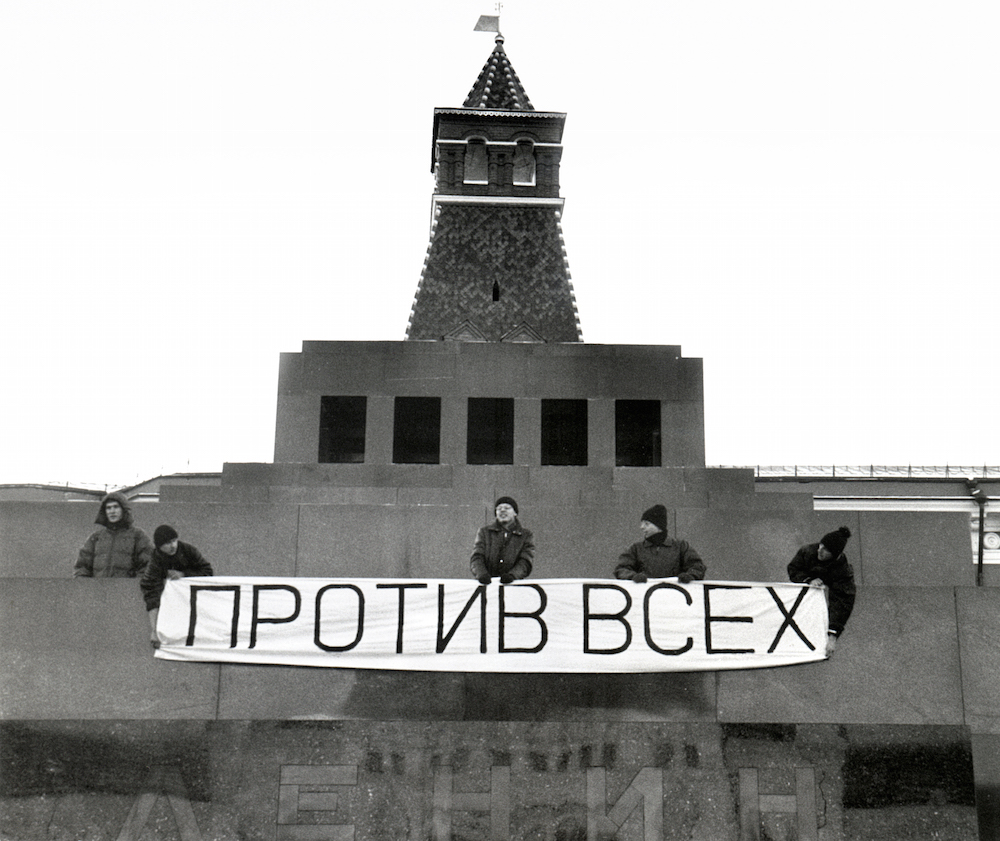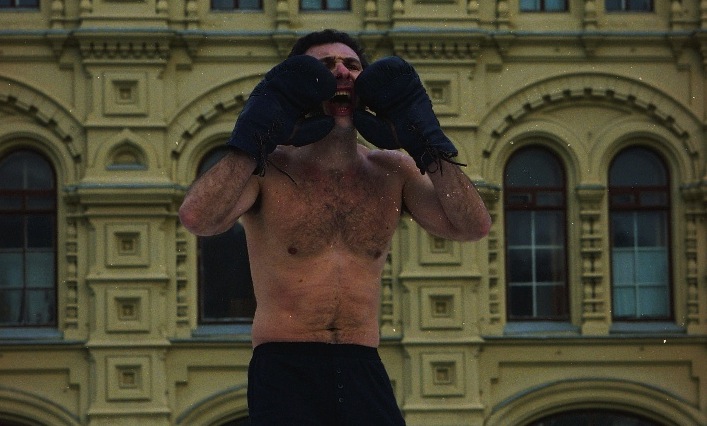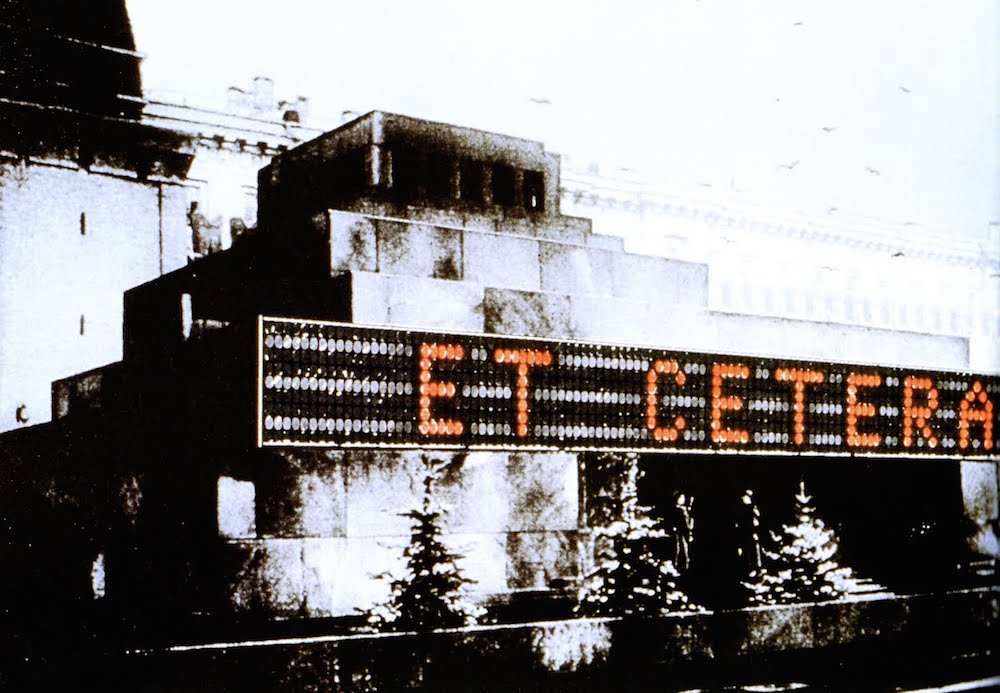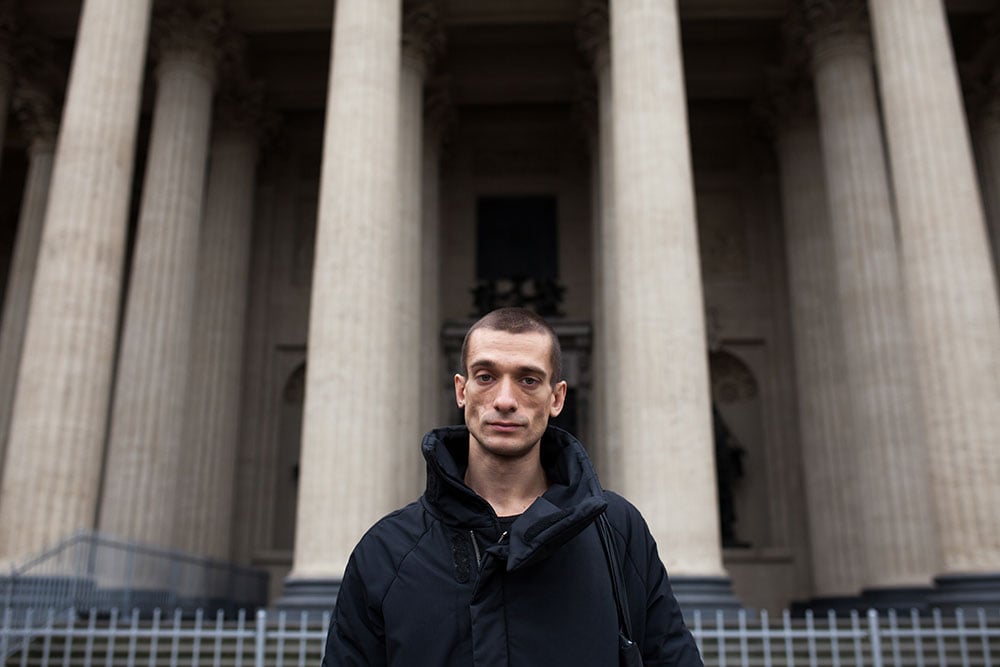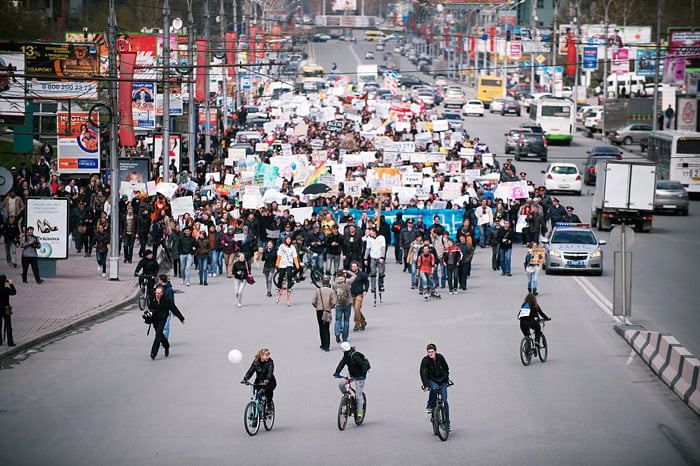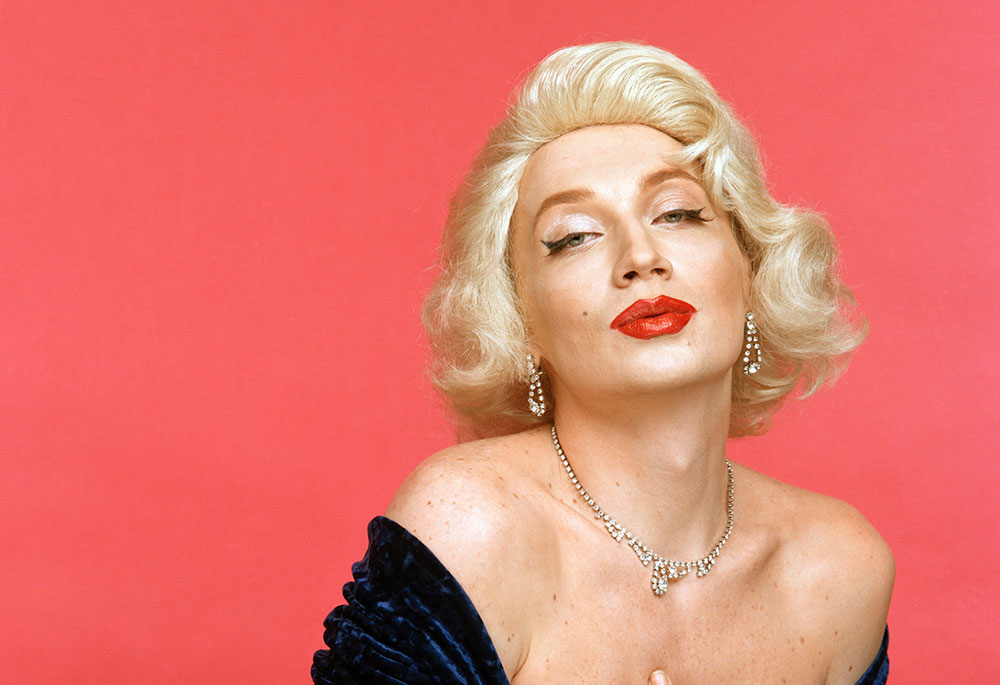Red Square riots: performance art in the centre of Moscow
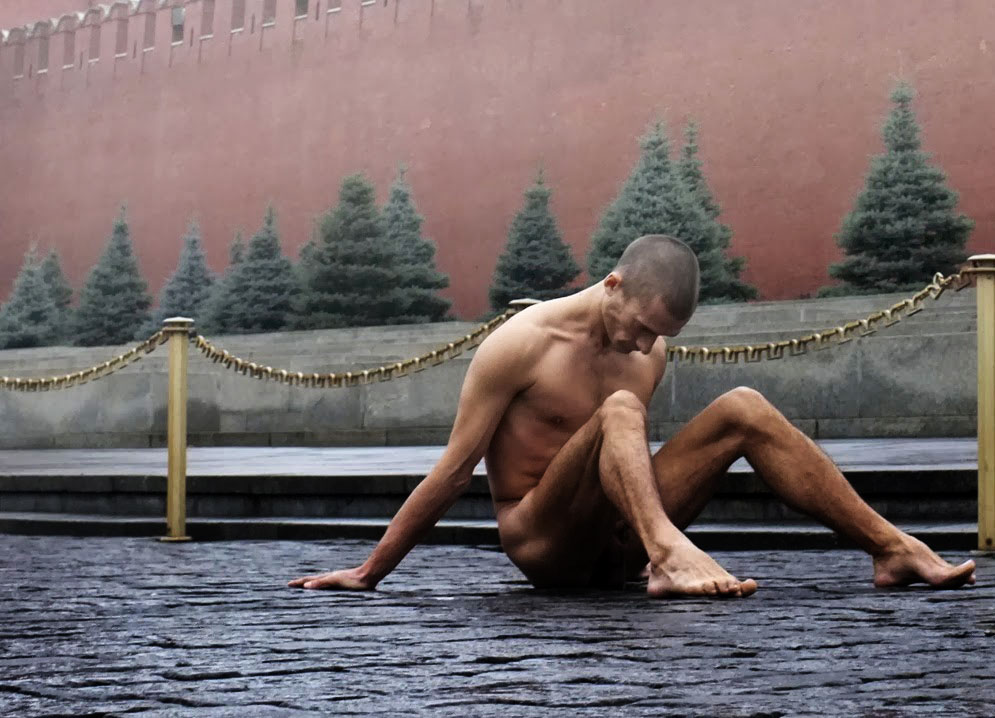
The likes of Pussy Riot and Pyotr Pavlensky have captured the attention of the world with their provocative performance art in Red Square. But they are part of a long tradition. Sergey Gulenkin looks at ten provocative performances in the heart of Moscow since the end of communism
For hundreds of years, Red Square has been a frontier zone between the sacred and the profane. The famous square appeared as a result of a fire in 1493, when a large area between Moscow’s Market and the walls of the Kremlin burnt down, and the land was left unreconstructed. Here carnival and trade jostled alongside religion; decrees were proclaimed, executions carried out, prayers sent up and damnation rained down. Here was St Basil’s Cathedral, symbolising the heavenly Jerusalem, standing next to the Place of Skulls, the Market and the towers and walls of the Kremlin. Together they represented Russia in microcosm.
In Soviet times the square took on new meaning. The mausoleum of Lenin and the Necropolis appeared, and the square became a place for grand parades — most notably, after 1945, the Victory Day parade held every year on 9 May. It was in the Soviet period that the sacred function of Red Square became crystallised, as a symbol of Soviet ideology and authority.
In the 1990s history took a turn, and Red Square was opened to the public again. Such a symbolic and visible public space was soon seized upon by performance artists, whose long tradition in Russia can be traced back to medieval “fools-for-Christ”, the crazy-wise Orthodox ascetics that counted St Basil among their number. The provocative, unruly and yet meaningful performances have operated, like Red Square itself, on the cusp of the sacred and the profane. We look back at ten of the key performance art actions in Red Square since the fall of the USSR.
1991: ETI
On 18 April 1991, participants in the movement ETI (Expropriation of the Territory of Art) lay their bodies in Red Square to spell out the word khui (cock). The event coincided with the passing of the Law on Morality, which forbade swearing in public places. One of the leaders of the group, Anatoly Osmolovsky, claimed that there was no political motive behind the event, it was purely artistic, and its aim was the de-sacralisation of Red Square and its transformation into a people’s place. This was not the only outing of ETI into this sacred territory. It was preceded by the recording of the film Price – 2.20 in which the artists, positioned in Red Square, eat cheap sausages and pretend to have been poisoned. In the winter of 1992, ETI carried out another brave intervention, preparing a pitch for a football match in front of the Kremlin.
1993: Vanity of Vanities, Komar and Melamid
On Lenin’s birthday, artists Komar and Melamid enacted Vanity of Vanities. The performance consisted of fitting a banner onto the tomb of the leader of the revolution with the words “Vanity of Vanities”, and a one-off reading from Ecclesiastes. The performance closely resonated with the troubled spirit of the times, blending into the paranoid din of the other demonstrations and marches taking place in the square.
1995: Yeltsin, Come Out! Alexander Brener
On a frosty 1 February, Aleksandr Brener, in boxing shorts and gloves, stood in Execution Square (The Place of Skulls) and by crying “Yeltsin, come out!” challenged the president Boris Yeltsin to a fight. Yeltsin did not appear from the Kremlin, and Brener was detained. By the rules of boxing, the rival’s no-show signified victory for the artist, but at the same time was witness to the fact that democracy had long been unattainable.
1999: Against All, Anatoly Osmolovsky
On 9 December, on a platform of Lenin’s mausoleum, Anatoly Osmolovsky and a few others unfurled a banner with the slogan “Against All”. The Against All movement gathered popularity, proclaiming that only a vote “against all parties” was the way to assert personal freedom. But the movement quickly faced a dilemma: either to make art, or to become an underground political organisation. Not wishing to abandon art, Osmolovsky and his colleagues appeared unprepared for real political activities.
2000: SES, Aleksei Kallima
If in the 1990s Red Square saw large rock concerts; then, in the 2000s, the authorities demonstrated an even more liberal approach: in 2000 a skating rink was erected in the square. The radical and uncompromising performances seen in the 1990s were left in the past. This demanded other courses of action from the artists. On 26 March, on presidential election day, Chechen artist Aleksei Kallima and some collaborators carried out a special artistic ritual. They drew a line around the Kremlin with anti-cockroach chalk, thereby striving to fence it off from penetration by an unclean power.
2005: Perverts — Worship of Lenin, Stupid People
The group Glupie Lyudi (Stupid People) carried out a performance called Perverts — Worship of Lenin. Now almost forgotten, the group enjoyed significant media fame in their time. Glupie Lyudi repeatedly introduced nonsense to the general public: travelling around Moscow using a map of Bali and the help of passers-by (Guidebook); collectively tearing off chewing gum from the floor of the Metro; and even covering policemen’s eyes with their hands while pretending to be an old friend (Guess who).
2010: Fucked up Lyonya Roofs Federal Agents, Voina
The situation changed in early 2010 when the actions of groups Pussy Riot and Voina (War) made the political meaning of performance art more acute. Voina never staged their actions in Red Square itself but many of them were organised in other public spaces around Moscow. Fucked Up Lyonya Roofs Federal Agents took place on 22 May, when, on the Kremlin bankside next to the Great Stone Bridge, Leonid Nikolaev, with a blue bucket on his head, jumped onto the bonnet of a Federal service car and ran across the roof, before fleeing from the officer in pursuit.
2012: Riot in Russia — Putin Wet Himself , Pussy Riot
The anarchist punk collective Pussy Riot performed the song Riot in Russia — Putin Wet Himself in Red Square on 20 January. Eight members of the all-female band mounted the platform of the Place of Skulls to perform. The location was chosen for its proximity to the Kremlin — the symbol of authority — while also referencing the tradition of 1990s activism, and the action For your and our freedom (1968), when eight Soviet dissidents went to the Place of Skulls to protest the entry of Soviet forces into Czechoslovakia.
2013: Fixation, Pyotr Pavlensky
Pyotr Pavlensky’s performance coincided with Police Day on 10 November, but within this context there was a broader perspective. In pinning his scrotum to a cobblestone of the most sacred place in the country, Pavlensky was giving his own literal interpretation of one of the main metaphors of power: the nationalistic term dukhovnie skrepi (spiritual ties). Pavlensky repeatedly emphasised that he believed his actions to be a stand against cultural chauvinism and a demonstration of the hidden mechanisms of power. The body stands out here as a social model; one figure is a representation of others more broadly.
2015: The Exorcists — the Defilement of the Mausoleum, The Blue Horseman
On 20 January, the Sinii Vsadnik (The Blue Horseman) collective carried out the performance The Exorcists: the Defilement of the Mausoleum, in which two young artists sprinkled holy water on Lenin’s mausoleum with cries of “Rise and be gone”. The performance lasted less than a minute, before the performers were arrested by police. One member of the collective, Irina Dumitskaya, in an interview with Radio Svoboda (Radio Freedom) explained the strategy of the group thus: “We want to destroy those things to which people attach themselves through our actions; through such buffoonery.”
This article is part of Moscow week, a special project run in association with Guardian Cities and the New East network.
